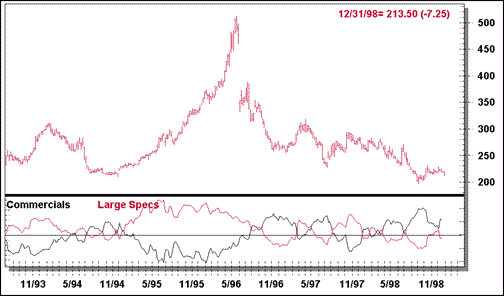Stocks, bonds, and real estate are the largest and best-known types of investments in our economy. They have distinctly different investment characteristics, and each has a specific effect on an investment portfolio. Over the past 20 years, the products of the managed futures industry, which invests in the global futures markets, have also been shown to have unique, important, and beneficial effects when added to investment portfolios. Managed futures may represent the smallest of the alternative asset classes, but its characteristics are becoming better and better known and its value in an investment portfolio is becoming increasingly clear. HereÕs a brief look at why managed futures perform as they do and how they can be understood in the context of the economic purpose served by the futures markets.
MANAGED FUTURES
A Rationale For Managed Futures
by Charles R. Lightner
Although the futures markets are widely misunderstood even among knowledgeable investors, they serve a critical purpose in our economy; through the managed futures industry, they provide an important investment opportunity for both institutions and individuals, and they need not expose the investor to unreasonable levels of risk.

The stock market is an economic mechanism for companies to raise capital by selling shares of equity to investors. Futures markets provide an economic mechanism to control price risk. That is their purpose and the reason that futures exchanges have been in continuous operation in the US since 1848. The farmer who wants to lock in the price of his crop prior to harvest can do so using futures contracts. The jeweler who wants to protect himself against adverse gold price action can do so using the futures markets. The car dealer who needs to pay for his inventory in yen can manage his currency risk using the futures markets. Were it not for the risk control provided by the futures markets, price levels in our economy would have to rise to compensate for the greater uncertainty.FIGURE 1: WEEKLY CBT CORN. The graph at the bottom of the price chart shows the net long or short positions of the commercials and large investors in the corn market. Note the symmetry of their positions.
Who are the participants in the futures markets? There are three groups of futures market participants: the producers of goods; the primary consumers of those goods; and investors not directly involved with the goods. As an example, the corn farmer is a primary producer in the corn market and the cerealmaker is a primary consumer. The producer and the primary consumer are referred to as commercials or hedgers. The investors are sometimes referred to as speculators.
As a group, the investor's role is to balance the net market demand of the commercial participants. If farmers want to sell more corn than cerealmakers want to buy, for example, there is a shortage of commercial demand on the buy side of the market. At that point, the commercials need an outside source of demand willing to enter the market to buy corn futures.
At any given time, the imbalance in the desires of producers and consumers defines the need for outside investors. From the point of view of the investors, that imbalance defines the net market opportunity. To better illustrate this process, let's look at information available from the government agency that monitors the activities of the futures markets.